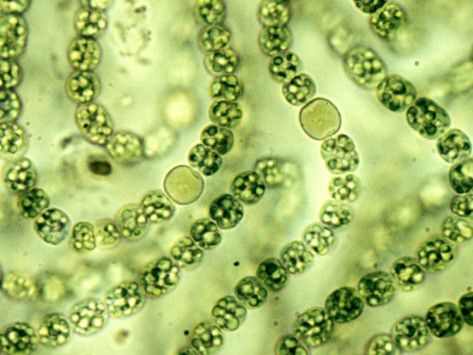Phytoplankton
Highlights:
Although cyanobacteria (blue-green algae) represented the highest populations during WY 2020, they normally represent a small percentage of the total biovolume. Two larger species of cyanobacteria contributed to the severe blooms and algal toxins identified at Cherry Creek Reservoir from mid-July through early August which led to beach closures in the State Park.
Phytoplankton are photosynthetic organisms that are the primary producers in aquatic systems. They form the base of aquatic food chains and are grazed upon by zooplankton and herbivorous fish. A healthy lake should support a diverse assemblage of phytoplankton, in which many algal groups are represented. Phytoplankton samples were collected at site CCR-2 from the photic zone and analyzed to identify and quantify the populations present. The results from WY 2020 indicate high productivity with diverse populations.
Phytoplankton and zooplankton data continued to exhibit characteristics of an over-productive and nutrient-rich Reservoir, as indicated by WY 2020 planktonic communities. Phytoplankton populations in Cherry Creek Reservoir were very diverse, with an average of over 40 species, and a range of 28-57 species present. On most dates, the most abundant phytoplankton taxa included Cyanophyta, commonly referred to as “blue-green algae” (or cyanobacteria, depicted in red), which are of concern but also many Chlorophyta (“green algae”, depicted in green), and Bacillariophyta (diatoms, shown in blue) which are both considered to be good or beneficial algae.
Cyanophytes may be responsible for the majority of algal blooms that occur in freshwater ecosystems based on competitive advantage over other groups of phytoplankton.
Many cyanophytes are smaller than other algal species, which is evidenced by the higher contribution of other algal groups to the total biovolume on most sampling dates. However, some species of cyanobacteria, such as Dolichospermum and Aphanizomenon typically have larger cells. These two species contributed to the severe blooms and algal toxins identified at Cherry Creek Reservoir during the summer.
Useful Links

Phytoplankton Concentrations



- Typically the first algae to bloom in early spring; when nutrients and light conditions in upper mixed layer are right, their competitive edge and rapid growth rate allows them to dominate phytoplankton.
- Important contributors to the food chain; food resource for zooplankton
- Freshwater diatoms commonly observed in reservoir are indicators of eutrophic (over-enriched) conditions; their degradation contributes to increased oxygen demand and phosphorus recycling

- Appear during periods of high nutrient concentrations; indicates both nitrogen and phosphorus are in excess supply
- Colonial and single-celled greens are a good food source for zooplankton
- Filamentous and large colonial greens do not add to food web, and create water quality problems

- Appear during periods of over-abundant enrichment and with very high nutrient levels, especially phosphorus
- Do not contribute greatly to food web; few people view cyanobacteria as beneficial organisms in a lake
- Create water quality problems; e.g., oxygen depletion when excessive growth produces blooms
- Some species may produce cyanotoxins under certain conditions

- Cryptophytes can live through the winter, under ice-cover and with little solar radiation for photosynthesis
- Important food for zooplankton; zooplankton, in turn, are food for fish and other organisms in food web
